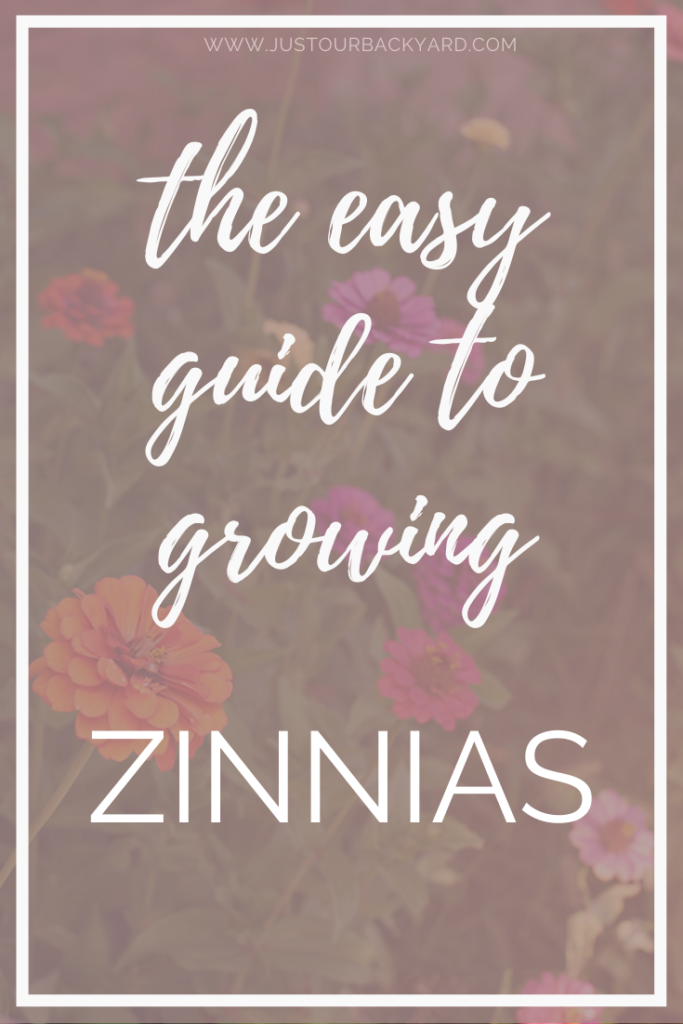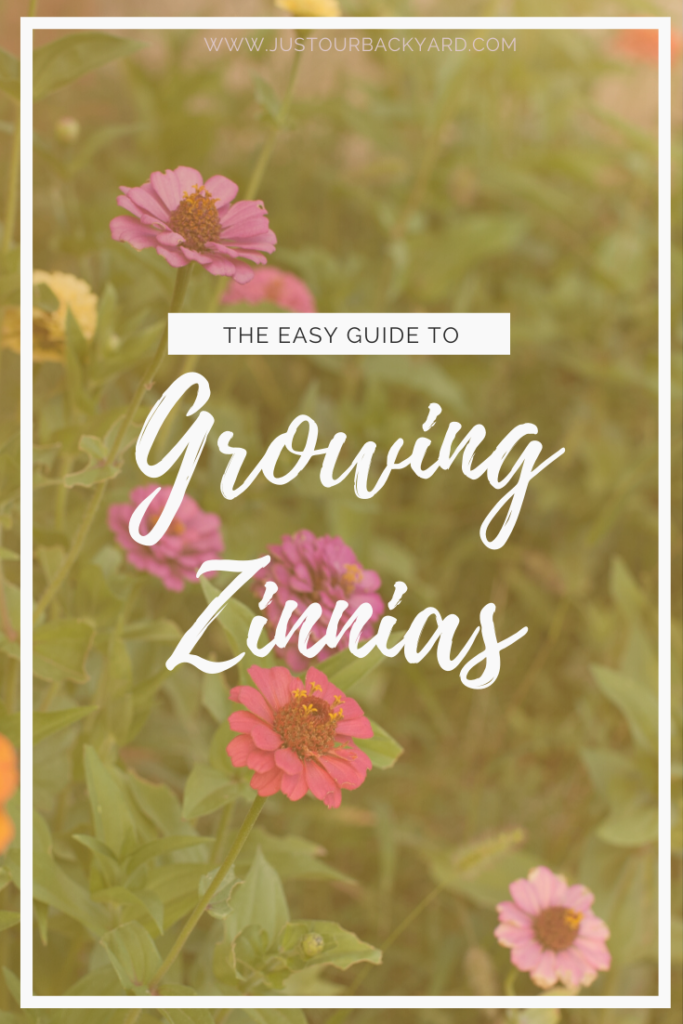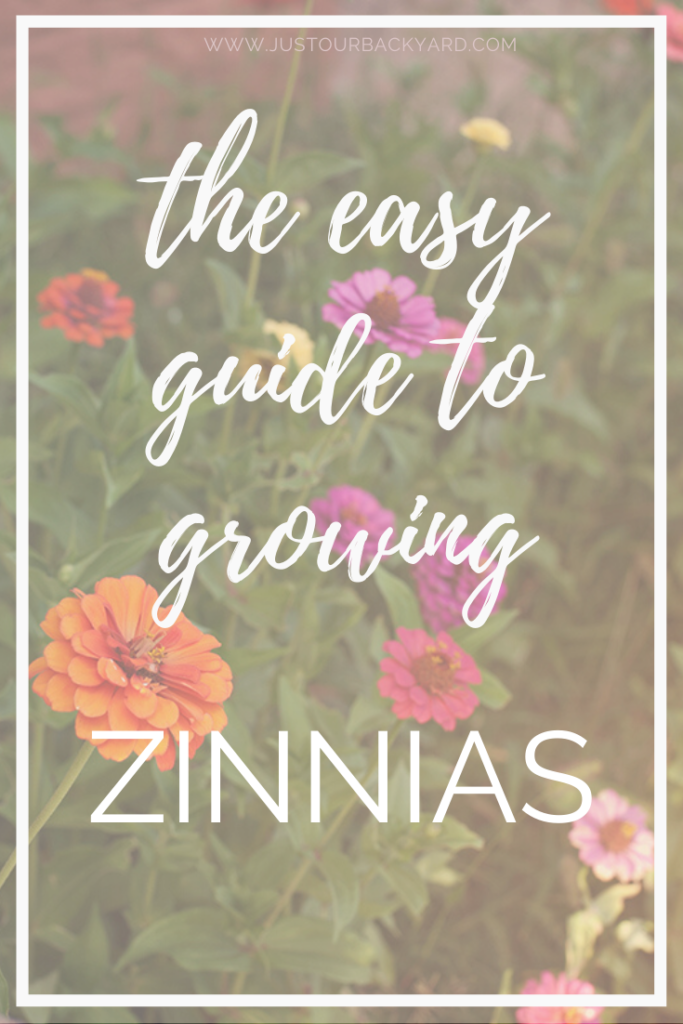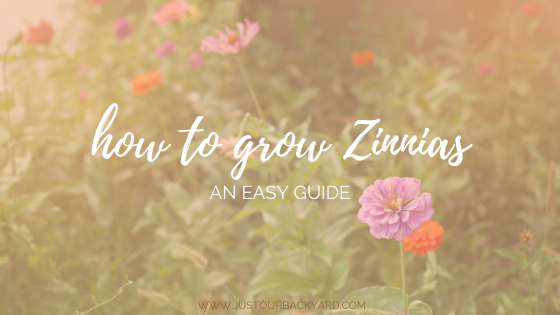
Is there anything more beautiful than flowers fully in bloom? I’d venture to say that one of the most gratifying things to grow (apart from growing your own food) are flowers in fact! Some things are easier to grow than others and I find that it’s important to me that I find varieties of flowers and vegetables that are as low maintenance as possible. Doing so makes it enjoyable for my kids to get in the garden with me and ensures that I won’t kill everything off when life inevitably gets busy. One of our favorite flowers to grow as a family is the zinnia. With the numerous varieties and colors, I have yet to find someone who doesn’t have a favorite that they love in zinnia family. So, how do I grow zinnias?
Sow zinnia seeds in a sunny location after all the danger of frost has passed in your area. Zinnas will adapt to all soil types but will thrive best in well drained areas. Zinnias can be grown in all hardiness zones! Sow the seeds ¼” deep spaced 4”-24” apart depending on variety. Maintain moderate soil moisture, don’t let the seed dry out! You should see seedling sprout within 4-7 days and when your seedlings reach 3” tall, thin to 6”-18” spacing between each seedling. Blooms should appear in a couple of months!
The earth laughs in flowers.
― Ralph Waldo Emerson
Why Grow Zinnias?
- Zinnias are one of the easiest flowers to grow and can be grown in any hardiness Zone.
- They make a beautiful cut flower and upon cutting will come back and re-bloom time after time.
- Zinnias bloom continuously from summer into fall depending on the frost dates in your area.
- They are great to grow with children and because of their ease many kids can grow these completely on their own.
- There are tons of types, kinds, and colors.
- Zinnias attract butterflies and can make a great bird seed.
- Zinnias will reseed themselves, so it’s always a fun surprise to see what you’ll get year after year.
About Growing Zinnias
Sizes
Different varieties of zinnias can range anywhere from 8” tall to upwards of 3 FEET tall! Make sure you read your seed packets for the varying varieties you plan to grow. You’ll want to keep their mature size in mind when you decide on the location to plant them. Taller varieties of zinnias can be affected by the wind and may even block a window if you don’t plan ahead. Tall varieties are great for foundation plantings or a s core background planting to the rest of your flower gardens. The shorter zinnia varieties make great borders and are great for containers and window boxes. It’s also fun to sprinkle these shorter varieties throughout your vegetable garden to add pops of color and gorgeous blooms all summer long.
Kinds & Shapes
There are three different kinds of zinnia flowers and these “kinds” are distinguished by the number of rows of petals and whether the center of the flower can be seen.
- Single-flowered zinnias have a visible center and a single row of petals.
- Semi-double flowered zinnias do not have visible centers and they have numerous rows of petals.
- Double-flowered zinnias have a visible center and numerous rows of petals.
Zinnias also come in different shapes such as cactus shape, beehive, and button. There really is a variety for everyone!
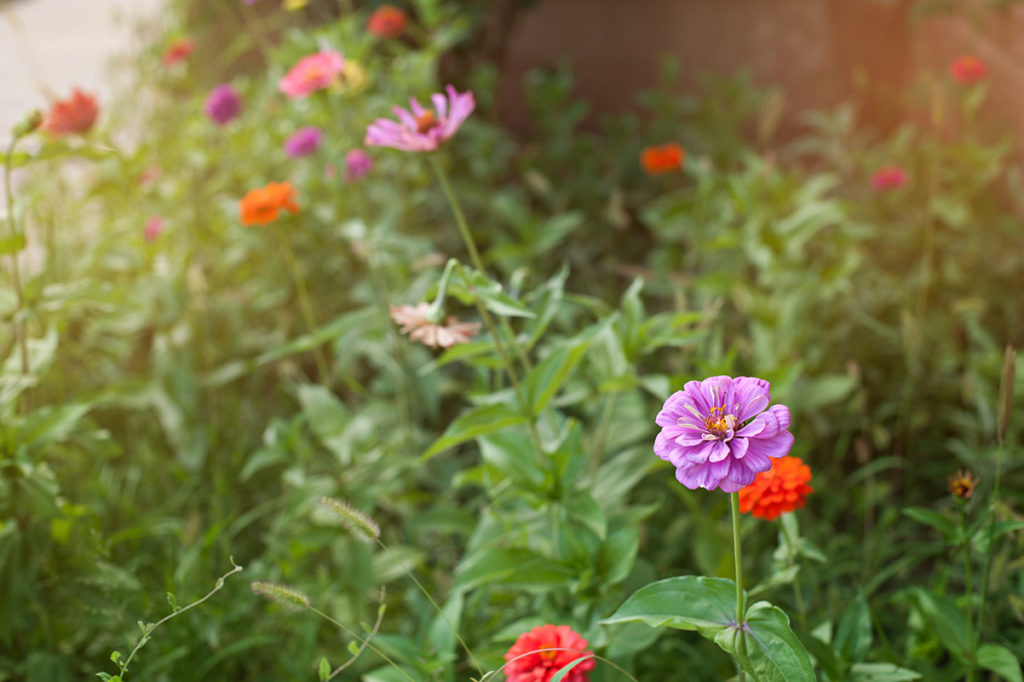
How Do I Grow Zinnias? + Details!
Zinnias are great to grow with kids. I know I’ve already mentioned this one, but I really can’t stress this enough! Since zinnias are a low-maintenance flower, children can grow these on their own. My daughter has been growing these since she was two or three years old. These along with sunflowers are some of the best flowers to grow with children. We simply put down seed once its warm enough, cover with about 1/4″ of soil and keep the soil moist… that’s it! A huge bonus is that they germinate in 4-7 days so kids get near instant gratification! It’s fun to buy the mix variety seed mixes for kids so they get to celebrate every time a different color blooms! Kids also love snipping blooms to fill vases and inevitably bringing you one as a gift. Zinnias really are hard to kill. Perfect for kids!
Zinnias grow heartily from seeds rather than transplants and zinnia seed is best sown AFTER the last frost date in your area. They are an annual flower, which means they will grow for the season, produce seed and then die when the temperatures begin to drop in late fall. The frost does kill them and they won’t come back season after season EXCEPT in the even you allow them to reseed. Many varieties will reseed themselves, meaning if you let the seed heads fall off after the frost, those seeds will sow themselves in your garden bed and when the temperatures get warmer the following summer, you’ll begin to see new seedling emerge from the seeds that fell the year before. In fact many prefer to sow these outside since they’re so stinking easy! Make sure to read your seed packet for any specifics on your variety.
Starting zinnia seeds indoors is possible as well. These can be sown inside in seed flats, egg cartons or even small cups. Use your imagination and don’t hesitate to reuse plastic or foam containers to keep from throwing them in the trash. I find that the plastic containers berries come in are great for starting seeds! It’s best to start them about 3 weeks before you intend to transplant them outside. You’ll plant 2-3 seeds per cell and thin these out to 1 per cell when the seedlings reach 2”-3” tall. Before transplanting your seedlings into the garden, make sure you harden them off to ensure a less stressful transition for your plants especially since these will more than likely be going in during warmer months.
Zinnias are a full-sun loving plant and will bloom best when it receives 6+ hours of sunshine a day. Zinnias love the heat (74-84 degrees) and will bloom continuously in the summer months. This is a huge plus for us here in New Mexico since we easily have 90+ temps all summer long. Not many easy flowers will thrive in this kind of continual summer heat but these will! Plant your seeds outside when night time temps reach 60 degrees.
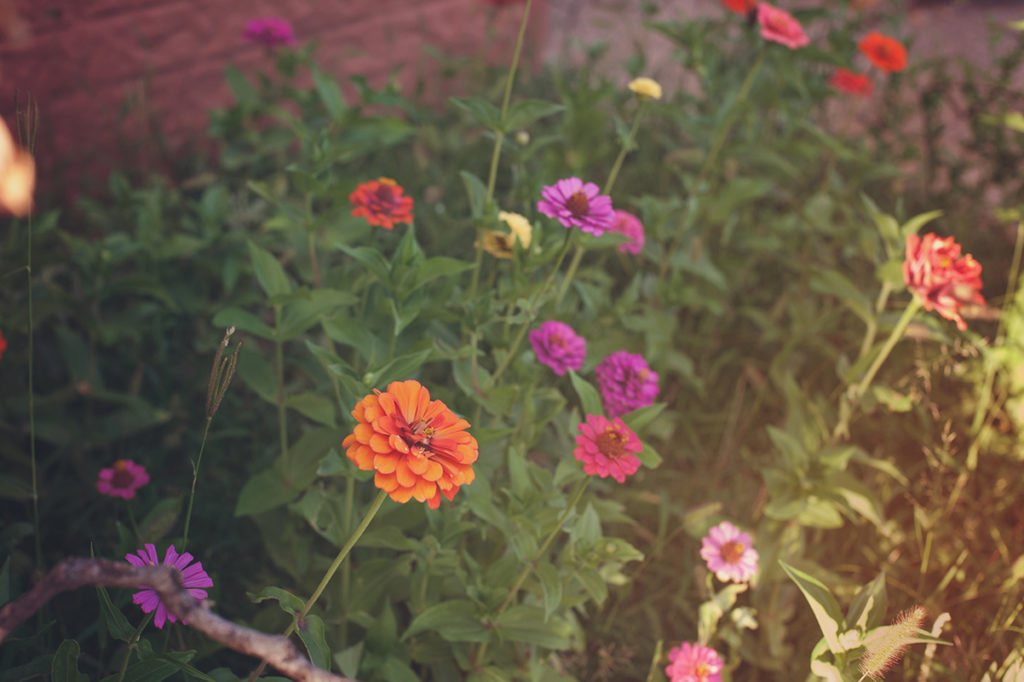
Zinnias will grow in all hardiness zones. To ensure you’ll get blooms, make sure you check your specific seed packets and take note of the “date to maturity”. This is the approximate length of time it will take for your seed to go from dirt to flower. Depending on the length of your growing season, you’ll see blooms from summer into fall.
Zinnias adapt to nearly all soil types. Clay, sand, loam, and any mixture in between will grow great zinnias. Like any plant, zinnias do benefit from some organic matter fertilizer from time to time (compost dressing) though I can’t remember a time I’ve ever fertilized my zinnias! They do like to have adequate drainage, so just make sure they don’t stay too wet or too dry!
Cutting or harvesting your zinnias is a piece of cake. Harvesting zinnias will keep the blooms coming all summer long. You can harvest your blooms twice a week! I love sending my daughter out (she’s 6) to gather a bouquet of zinnias to fill a vase for the table. We like to take a clean vase with us to the garden to put the blooms straight into. This helps them to not wilt should you (or your kids) get distracted in the garden along the way. The first time you cut your zinnias, it’s best to cut low on the main stem leaving one set of leaves/shoots below the cut. This will ensure that the future shoots will be strong and numerous!
Zinnias may be susceptible to fungal spots, powdery mildew, and bacterial wilt depending on where you live. The best way to avoid these are to NOT water the leaves or to make sure you water with enough time for the leaves and stem to dry out. I prefer to water in the morning once the sun is hitting the plant then I don’t have to worry about it too much! However, if you do live in a humid area, spacing your flowers even further apart than what your seed packets suggest will help prevent mildew and fungal disease.
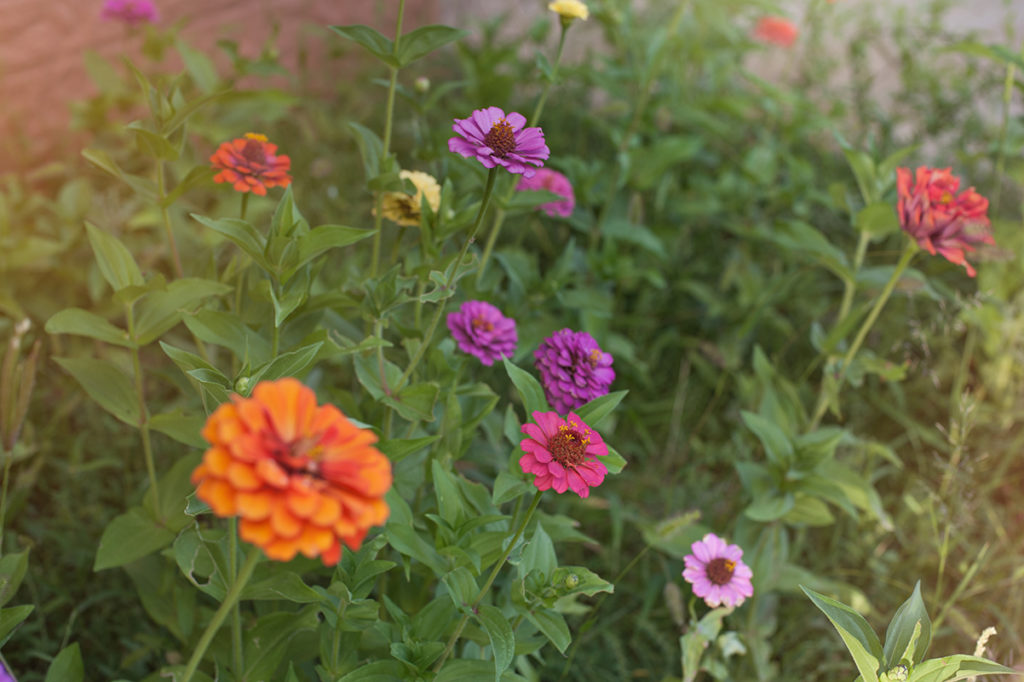
Tips
- For cutting patch, plant closer than you would in the landscape. You can do three rows to a 30 inch wide bed with 6 in between plants in the row. Do keep in mind so if you live in a humid area this could cause problems.
- Succession plant. The length of your growing season will dictate how many times you’ll be able to sow zinnia seeds. Succession planting simply means to space out the dates you sow seed and to do it numerous times. This will ensure you have successive blooms throughout the season. I plant once a month from late spring into summer. We don’t receive our first frost until mid October here in New Mexico.
- Support your zinnias. Depending on the height of your flowers you may need to stake or support your flower patch. You can use flower support netting when you initially so your flowers and they will grow through it.
- Collect your seedheads! Because zinnias are one of the easiest flowers to grow, you’ll want to make sure you’re collecting your seedheads! This will ensure you have seeds to sow either for successive plantings or for next season. You can also use these seeds to feed the birds. Once the flower head dries out on the stem, I pluck the entire thing off. If they still have some moisture in them, I lay them out to fully dry then store the entire flower heads in mason jars. You’ll break it apart to save just the seed if you’d like at this point, but I usually wait until I’m going to use it. It’s also a great fun job for the kids so I like to have them do this part for me and I find it pretty tedious!
So, if you’ve been wanting to grow flowers in your yard and garden, but aren’t sure where to start, I’d highly recommend starting with zinnias. They grow fast or super easy and the product is a gorgeous cut flower that will bloom all summer long. My kids love growing these and it’s so fun to watch them grow these on their own. We have some great memories of being in the garden in the hot summer months surrounded by our gorgeous zinnia beds!
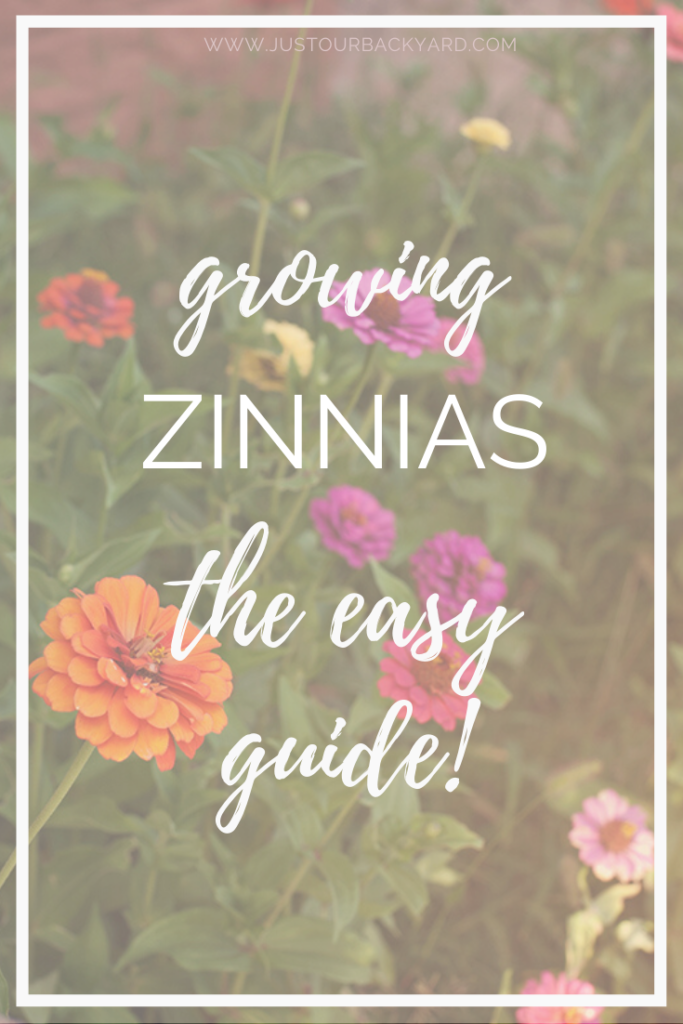
I can’t wait to see what you grow. I hope to have more backyard garden goodness for you all soon! If you’d like to see our past vegetable garden, you can see some pictures HERE! We’re moving it this year so make sure you check back to see what we end up with.
Please share your experience with me. If you enjoyed this post, please pin the image above!
Want to see more gardening goodness? Check out our Backyard Gardening Pinterest Boards Here.


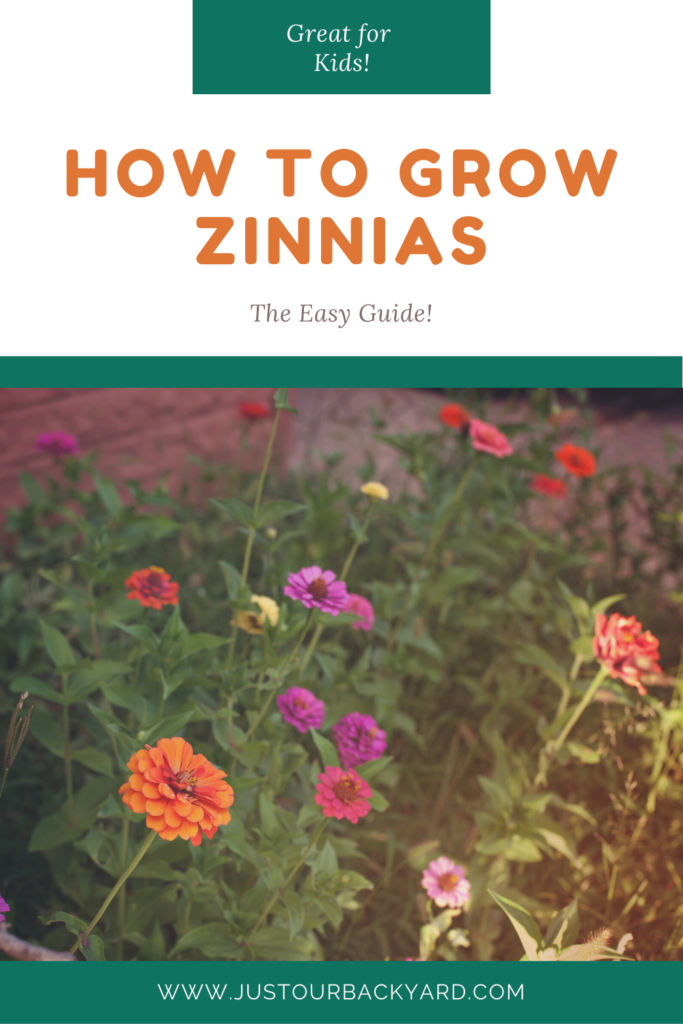 img src=”https://justourbackyard.com/wp-content/uploads/2020/03/how-to-grow-zinnias-from-seed-annual-flower-garden-683×1024.png” alt=”” class=”wp-image-720″>
img src=”https://justourbackyard.com/wp-content/uploads/2020/03/how-to-grow-zinnias-from-seed-annual-flower-garden-683×1024.png” alt=”” class=”wp-image-720″>
